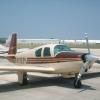-
Posts
4,719 -
Joined
-
Last visited
-
Days Won
38
cliffy last won the day on November 21
cliffy had the most liked content!
The recent visitors block is disabled and is not being shown to other users.

cliffy posted a topic in General Mooney Talk



cliffy replied to Flyler's topic in General Mooney Talk

cliffy replied to ptwffz's topic in Vintage Mooneys (pre-J models)

cliffy replied to Mooney-Shiner's topic in Vintage Mooneys (pre-J models)

cliffy replied to ptwffz's topic in Vintage Mooneys (pre-J models)

cliffy replied to Mooney-Shiner's topic in Vintage Mooneys (pre-J models)

cliffy replied to ptwffz's topic in Vintage Mooneys (pre-J models)
We have placed cookies on your device to help make this website better. You can adjust your cookie settings, otherwise we'll assume you're okay to continue.